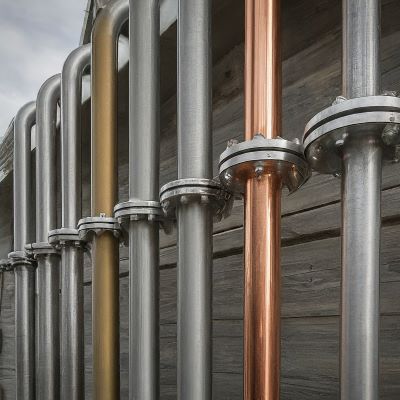In the intricate world of piping systems, seamless unions reign supreme. They offer unparalleled reliability and efficiency, making them the go-to choice for countless applications. But amongst these seamless unions, a specific champion emerges: the pipe with a flange end. Its distinct design, characterized by a protruding flange at its extremity, unlocks a treasure trove of benefits that propel it to the forefront of piping solutions.
What is a Flanged End Pipe?
Imagine a regular pipe, but instead of its usual smooth ends, it boasts a robust, circular collar welded or threaded onto its tip. This collar, aptly named the flange, serves as the pipe’s point, allowing it to be easily bolted or welded to other flanged components. This seemingly simple addition transforms the pipe into a versatile powerhouse, ready to tackle even the most demanding piping challenges.
Benefits of Using Pipe with Flange End
The allure of flanged pipes extends far beyond their unique appearance. Here’s a glimpse into the treasure chest of advantages they offer:
Enhanced sealing capabilities: Unlike threaded or glued connections, flanges provide a superior seal, virtually eliminating the risk of leaks, even under high pressure or extreme temperatures. This makes them ideal for critical applications where even the slightest leak could be catastrophic.
Ease of installation and maintenance: Flange connections facilitate quick and hassle-free installation and maintenance. Dismantling and reassembling pipes becomes a breeze, minimizing downtime and saving precious resources. This ease of use is particularly valuable in time-sensitive projects or confined spaces.
Versatility in various applications: From navigating the labyrinthine corridors of power plants to gracing the gleaming interiors of modern buildings, flanged pipes adapt seamlessly to diverse environments. Their compatibility with various flange types and fittings extends their reach even further, making them the piping equivalent of a chameleon.
Types of Pipes Compatible with Flange Ends
But not all pipes are created equal. When choosing a flanged pipe, understanding the material options is crucial:
Steel: The tried-and-true champion, steel pipes offer unmatched strength and durability for high-pressure and high-temperature applications.
Stainless steel: For corrosion-resistant needs, stainless steel pipes stand tall, ensuring longevity and hygiene in critical sectors like food processing and pharmaceuticals.
Plastic: Lightweight and economical, plastic pipes excel in low-pressure applications like drainage and irrigation.
Copper: When malleability and heat conductivity are paramount, copper pipes shine, finding favor in plumbing and HVAC systems.
Selecting the right material hinges on the specific demands of your project. Consider factors like pressure, temperature, and fluid compatibility to make an informed decision.
Types and Variations of Flange Fittings
The world of flanged pipes wouldn’t be complete without its trusty companions: flange fittings. These versatile connectors act as the intermediaries, bridging the gap between pipes and other flanged components. From elbows and tees to reducers and blind flanges, each fitting plays a crucial role in shaping the flow of your system.
Design Considerations for Flange-Ended Pipes
Before embarking on your flanged pipe journey, take a moment to ponder the design considerations:
Pressure rating: Choose pipes and flanges with pressure ratings exceeding the maximum anticipated pressure in your system.
Temperature range: Ensure the materials you select can withstand the expected temperature fluctuations within your system.
Flange compatibility: Match the flange types and sizes of your pipes and fittings for seamless connections.
Corrosion resistance: If your system deals with corrosive fluids, opt for materials like stainless steel or plastic with appropriate corrosion-resistant properties.
By carefully considering these factors, you can design a flanged pipe system that stands the test of time and delivers optimal performance.
Applications of Pipe with Flange End
The applications of flanged pipes are as diverse as their benefits. Here’s a glimpse into their vast playground:
Industrial applications: From the behemoths of power plants to the intricate veins of oil refineries, flanged pipes handle high-pressure fluids and aggressive environments with stoic resilience.
Plumbing and construction: In the bustling world of buildings, flanged pipes ensure the smooth flow of water, waste, and other fluids, keeping the lifeblood of structures pulsating.
HVAC systems: When it comes to regulating temperatures, flanged pipes connect boilers, chillers, and air handling units, ensuring comfortable climates in homes and buildings.
Conclusion
A pipe with a flange end is more than just a piping component; it’s a testament to ingenuity and efficiency. Its seamless unions, robust build, and unparalleled versatility make it the undisputed champion.
Post time: Mar-01-2024


